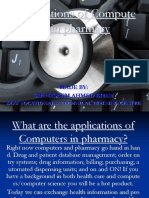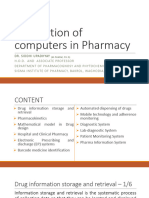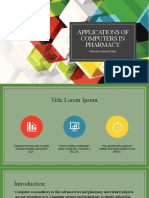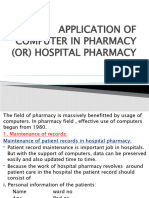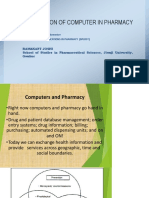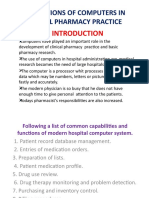0% found this document useful (0 votes)
112 views13 pagesApplication of Computers in Pharmacy
Computers are integral to pharmaceutical sciences, enhancing drug discovery, clinical trials, pharmacy practice, manufacturing, and education through efficient data management and analysis. They facilitate drug information storage, retrieval, and patient care by utilizing databases, decision support systems, and electronic health records. The application of computers improves accuracy, efficiency, and safety in healthcare delivery, ultimately benefiting patient outcomes.
Uploaded by
pillaipreethi2006Copyright
© © All Rights Reserved
We take content rights seriously. If you suspect this is your content, claim it here.
Available Formats
Download as PDF, TXT or read online on Scribd
0% found this document useful (0 votes)
112 views13 pagesApplication of Computers in Pharmacy
Computers are integral to pharmaceutical sciences, enhancing drug discovery, clinical trials, pharmacy practice, manufacturing, and education through efficient data management and analysis. They facilitate drug information storage, retrieval, and patient care by utilizing databases, decision support systems, and electronic health records. The application of computers improves accuracy, efficiency, and safety in healthcare delivery, ultimately benefiting patient outcomes.
Uploaded by
pillaipreethi2006Copyright
© © All Rights Reserved
We take content rights seriously. If you suspect this is your content, claim it here.
Available Formats
Download as PDF, TXT or read online on Scribd
/ 13













